Submeter: A submeter is a device installed downstream from a utility meter such as an electrical meter, gas meter, or water meter. The purpose of a submeter is to accurately measure and monitor energy usage for targeted loads. Example: A common application for a submeter is an apartment building where property management would like to bill each tenant for actual electrical usage instead of guessing or averaging usage.
What is a submeter?
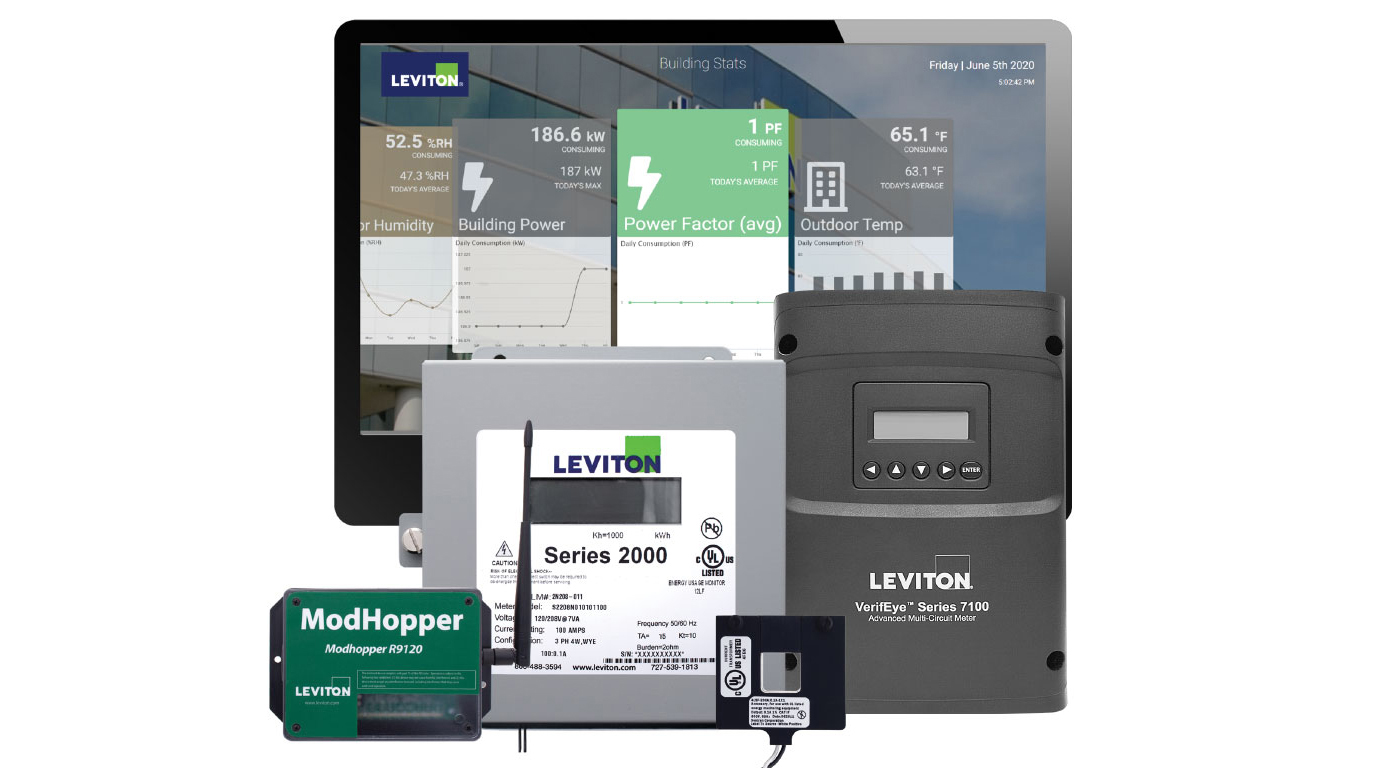
VerifEye Energy Information Submetering Software
Base Module, Advanced Reporting Module and Tenant Billing Module; all accessible online.
Submeters
Submeters capture accurate measurements of power consumption for strategic energy management.
Networking Devices for Submetering
Submetering data integrates with other critical energy sensors to provide a comprehensive energy monitoring solution.
Current Transformers for Submeters
Current transformers measure the electrical current flowing through the line.
What is submetering?
The measurement of consumption (electric, water, gas, etc.) downstream of a utility company meter.
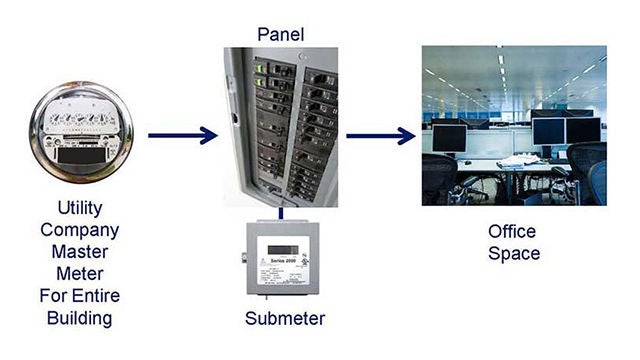
How much submetering is needed?
This is application dependent. See example to the right.
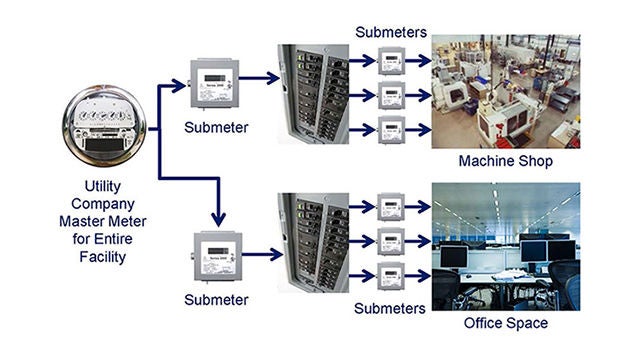
Why use submetering?
- Tenant Billing
- Energy Monitoring
- Motivation: Once tenants become accountable for energy consumption, usage statistically drops*
- Money-Saving: Long-term savings from 15-20%
- Energy consumption can vary as much as 250% in like facilities
- Goal is cost savings through energy efficiency
Accountability for Long-Term Savings *Case study by NYSERDA 1991-Carlyle and Scott Towers, New York City, New York State Energy Research and Development Authority.Residential Submetering Case Study, Carlyle Towers & Scott Towers, October 1997
California Title 24 2022 Requirements
- Section 130.5(a) & (b)—Service Metering, Disaggregation of Electrical Circuits
- Each electrical service shall have permanently installed user-accessible metering of total electrical energy use per Table 130.5-A.
- This does not apply to buildings for which the utility company provides a meter for occupant or user use that indicates instantaneous kW demand and kWh for a user-resettable period
- Each newly installed switchboard, panel, and motor control center (in both existing and newly installed construction buildings) must be designed to permit the disaggregated measurement of electrical load energy downstream according to the requirements of Table 130.5-B.
Quick Take: Newly installed meters must be capable of disaggregated measurement of electrical loads, which can be viewed downstream from the meter.
Code Compliance: Table 130.5-A: Title 24
- Minimum Requirements for Metering Electrical Loads
| Meter Type | Services <50kVa | Services 50-250 kVa | Services 250-1000 kVa | Services >1000kVa |
| 208V 3PH | 0-139 | 139-690 | 690-2775 | >2775 |
| 480V 3PH | 0-60 | 60-300 | 300-1200 | >1200A |
| Instantaneous (at the time) kWhdemand | Required | Required | Required | Required |
| HistoricPeak Demand (kW) | Not Required | Not Required | Required | Required |
| ResettablekWh | Required | Required | Required | Required |
| kWhper rate period | Not Required | Not Required | Not Required | Required |
Additive and subtractive methods can be used to determine aggregate and disaggregated energy usage! Use Software and Networking
Code Compliance: Table 130.5-A: Title 24
- Minimum Requirements for Separation of Electrical Loads
| Meter Type | Services <50kVa | Services 50-250 kVa | Services 250-1000 kVa | Services >1000kVa |
| 208V 3PH | 0-139 | 139-690 | 690-2775 | >2775 |
| 480V 3PH | 0-60 | 60-300 | 300-1200 | >1200A |
| HVAC systems and components; chillers, cooling towers, circulator pumps, etc. | Not Required | All HVAC loads in aggregate | All HVAC loads in aggregate and each HVAC load =50kVA or greater | All HVAC loads in aggregate and each HVAC load =50kVA or greater |
| Domestic and Service Water system pumps and other system components | Not Required | All loads in aggregate | All loads in aggregate | All loads in aggregate |
| Elevators, Escalators, Moving Walks, etc. | Not Required | All loads in aggregate | All loads in aggregate | All loads in aggregate |
Title 24 does not specify data acquisition methods or data storage and presentation methodology
Code Compliance: Table 130.5-A: Title 24
- Minimum Requirements for Separation of Electrical Loads
| Meter Type | Services <50kVa | Services 50-250 kVa | Services 250-1000 kVa | Services >1000kVa |
| 208V 3PH | 0-139 | 139-690 | 690-2775 | >2775 |
| 480V 3PH | 0-60 | 60-300 | 300-1200 | >1200A |
| Lighting including exit, egress, and exterior | Not Required | All loads in aggregate | All lighting disaggregated by floor, type, or area | All lighting disaggregated by floor, type or area |
| Plug load, including appliances rated < 25kva | Not Required | -All plug loads in aggregate -Groups of plug loads exceeding 25 kVa connected load in an area < 5000 ft2 | -All plug loads separated by floor, type, or area -Groups of plug loads exceeding 25 kVa connected load in an area < 5000 ft2 | -All plug loads separatedby floor, type, or area -All groups of plug loads exceeding 25 kVa connected load in an area <5,000 ft2 |
| ChargingStations | All loads in aggregate | All loads in aggregate | All loads in aggregate | All loads in aggregate |
| Includes lighting, plug and EV language only. HVAC, Water pumps, elevators, theatrical, commercial kitchens, renewable requirements not included in this table. See T24 specifics. | ||||
Title 24 does not specify data acquisition methods or data storage and presentation methodology
Code Compliance: Table 130.5-A: Title 24
- Minimum Requirements for Separation of Electrical Loads
| Meter Type | Services <50kVa | Services 50-250 kVa | Services 250-1000 kVa | Services >1000kVa |
| 208V 3PH | 0-139 | 139-690 | 690-2775 | >2775 |
| 480V 3PH | 0-60 | 60-300 | 300-1200 | >1200A |
| Other Non HVAC Loads/Appliances rated at <25kVA | Not Required | All | Each | Each |
| Industrial/Commercial load centers <25kVA to include theatrical lighting/comm kitchens | Not Required | All | Each | Each |
| Loads associated w/renewable power source | Not Required | All loads in aggregate | All loads in aggregate | All loads in aggregate |
| Renewable Power Source (Net or Total) | Each Group | Each Group | Each Group | Each Group |
Title 24 does not specify data acquisition methods or data storage and presentation methodology
New York Local Law 88 (NY LL 88 – 132/134)
New York City requires all commercial buildings larger than 25,000 sq ft to install submeters for any tenants who lease at least 5,000 sq ft of space
- Amended by LL 132/134 in 2016 to reduce square footage thresholds
- All commercial buildings larger than 25,000 sq ft (was 50,000) must install submeters for any tenants that lease at least 5,000 sq ft (was 10,000) of space
- Required equipment must be in place by January 1, 2025
- Majority of NY commercial leases are 10 years long
- Meters must be planned and installed now to ensure compliance and prevent tenant disruption

Seattle Code for Energy Metering
- Requires submetering in newer buildings larger than 20,000 sq ft, and additions larger than 10,000 sq ft.
- Tenant improvements where a tenant occupies an entire building floor must be individually metered.
- Buildings with metering capabilities must maintain that capability in future alterations and additions.
- 1202.1-1202.5 End User Submetering
- The system must also collect energy use data for the total building and separately for each of the end-use categories in Sections 1202.1 through 1202.5.

City of Seattle Energy Metering Requirements
| Totals by Load Type | Energy Use Measurement |
| 1202.1 HVAC System Total Energy Use | Must include all energy for space hearing, space cooling,ventilation, boilers, chillers, pumps, fans for supply, return, relief, exhaust, parking garages |
| 1202.2 LightingSystem Total Energy Use | Must include interior and exterior, but not plug-in task lighting |
| 1202.3 Plug Load SystemTotal Energy Use | All energy used by plugged-intask lighting, appliances, and other equipment |
| 1202.4 Process LoadTotal Energy Use | Non building operations loads >2% of total (or part of Misc) |
| 1202.5 Miscellaneous Total Energy Use | Other categories, including domestic hot water, elevators and escalators, swimming pools |
ASHRAE 90.1 Submetering Requirements
8.4.3.1 Electrical Energy Monitoring
- Measurement devices shall be installed in new buildings to monitor the electrical energyuse for each of the following separately:
- Total electrical energy
- HVAC systems
- Interior lighting
- Exterior lighting
- Receptacle circuits
8.4.3.2 Recording and Reporting
- The electrical energy use for all loads specified in Section 8.4.3.1 shall be recorded a minimum of every 15 minutes and reported at least hourly, daily, monthly, and annually.
- The data for each tenant space shall be made available to that tenant. In buildings with a digital control system installed to comply with Section 6.4.3.10, the energy use data shall be transmitted to the digital control system and graphically displayed.
- The system shall be capable of maintaining all data collected for a minimum of 36 months.
Quick Take: Electrical energy devices are required in new buildings to monitoring a variety of applications AND energy usage data must be recorded.
Code Similarity
| Control Type | IECC 2021 | ASHRAE 90.1 2019 | Title 24 2022 | Summary of Requirements |
| Service Metering Disaggregation of Electrical Circuits | ✔ | ✔ | ✔ |
|
States with Electrical Submetering Legislation
- Arizona—landlords can measure individual usage and bill tenants for gas, water, electricity, trash removal, and wastewater
- California—2022 Title 24, Part 6 includes electrical energy monitoring and disaggregation of load requirements
- Connecticut—landlords are required to obtain approval from the Public Utilities Commission in order to submeter
- District of Columbia—landlords can submeter the electric and gas for nonresidential rental units that are not already individually metered
- Florida—electric utility companies are required to individually meter for each unit in most buildings
- Indiana—submetering equipment may be installed in individual units with tenants billed
- Maryland—commercial and residential submetering and tenant billing allowed with state commission approval
- Minnesota—submetering may not be limited to building occupants by public utilities
- New Jersey—New Jersey Board of Public Utilities has authority over submetering, which is permitted in industrial, commercial, publicly financed and government-owned buildings
- New York—New York Local Law 88 requires all commercial buildings larger than 25,000 sq ft must install submeters for any tenants that lease at least 5,000 sq ft of space
- Oklahoma—MDUs may be served by a meter/submeter system as opposed to utility metering
- Oregon—regulations that allow for submetering and tenant billing by landlords
- Texas—newly constructed apartments and condos must have submetering capabilities
- Virginia—landlords can submeter water, electricity, and gas to residential and commercial tenants, with standards and requirements for the equipment set out by the law
Current Transformers (CT)
- Current Transformers go around the conductor for each circuit to be metered.
- 3 Basic CT Types
- Solid Core (100A –400A)
- Split Core (100A –1600A)
- Rogowski Coil (Wide range 50-5000A)
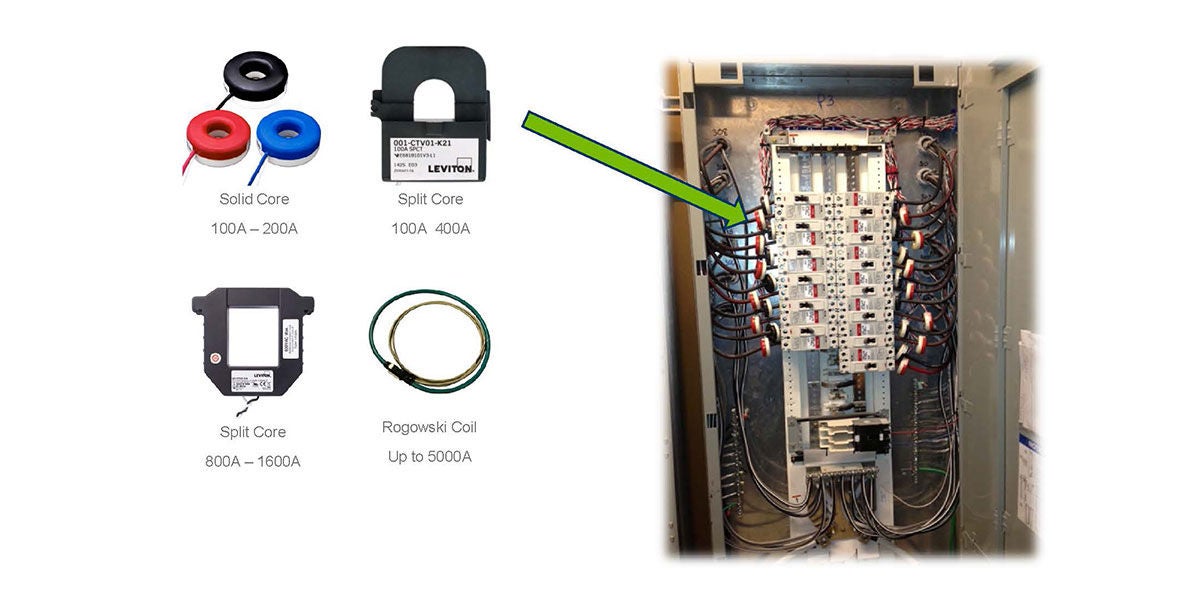
Types of Current Transformers (CT)
100mA vs 333mV CT Output
- Leviton meters utilize 2 CT output types
- Series 1000, 2000, 3500, 8000 & Mini Meter all use a 100mA output
- Series 4000, 4100, 7000, 7100 all use 333mV output
- CT output must match the meter CT input (100mA / 333mV)
- CT must be sized according to the amperage of the circuit it is attached to.
- CT rating must be = > than the maximum amperage of the circuit.
- Leviton meters utilize 2 CT output types
- Solid Core CT
- Used for higher (revenue grade) accuracy and tenant billing applications
- 100mA –CDA01/02, CDF04
- 333mV –CDV01/02
- Used for higher (revenue grade) accuracy and tenant billing applications
- Split Core CT
- Used for retrofit where disconnecting the conductor would be problematic.
- Used for commercial/industrial applications where revenue grade accuracy is not a requirement
- 100mA –CTD01/02/04, CTC08/12/16
- 333mV –CTV01/02/04/08
- Rogowski Coil CT
- Used for high amperage circuits
- CRV50 (12”, 16”, 18”, 24” lengths)
- Used for high amperage circuits
Submeter Wiring Diagrams
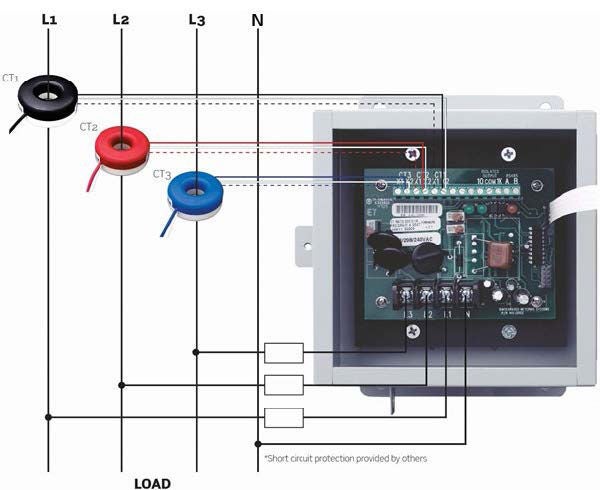
- Each CT is connected to the CT input on the meter, acting as the current sensor for the circuit.
- Single-phase meters use 1 CT
- 2-phase meters use 2 CTs
- 3-phase meters use 3 CTs
- One CT for each hot leg in the circuit.
- No CT on the Neutral
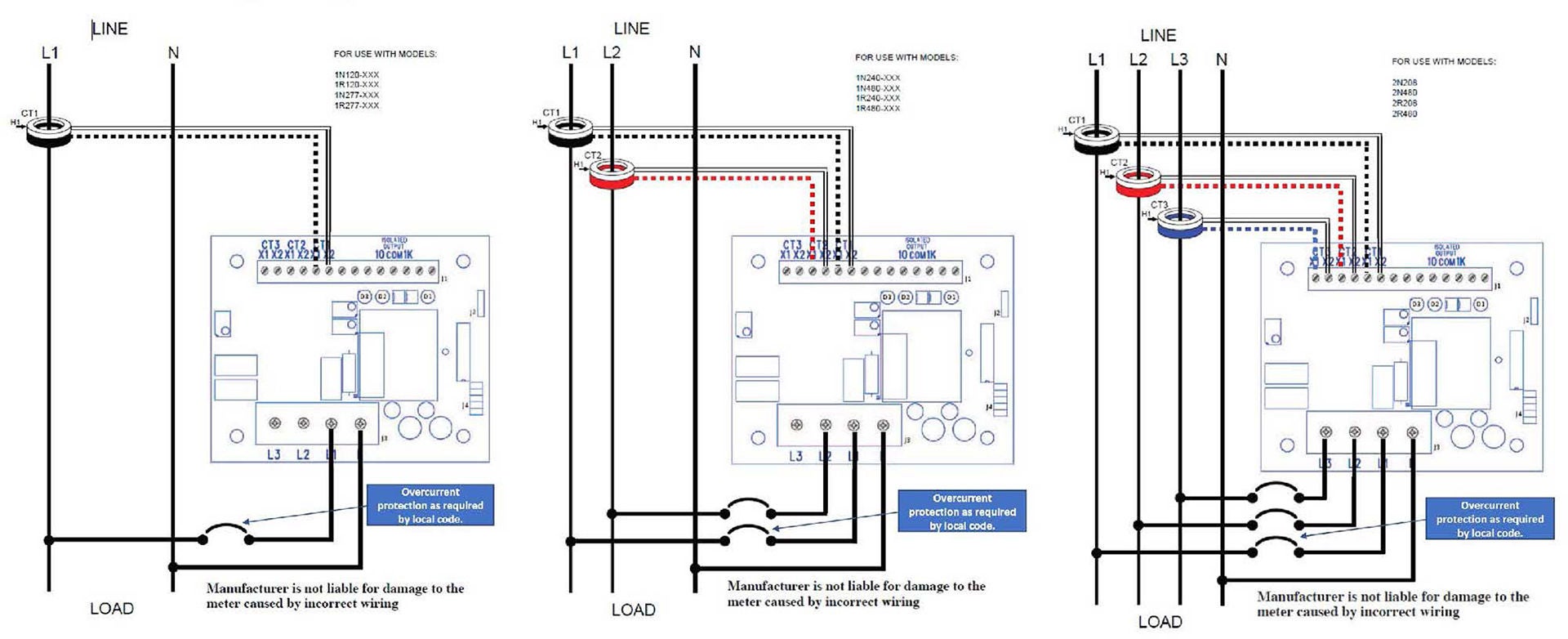
Common Issues with Current Transformer Applications

Reversed Polarity
- Negative kWh readings
- CTs are labeled indicating which side should face the load.
- Some meters have a reverse polarity indicator / adjustment
- It is always best to correct the error by correctly installing the CT
- If the CT is correctly oriented, check the input polarity on the meter.
CT Sizing (Wrong Amperage)
- Readings are directly related to the system amperage of the meter and the paired CT.
- 200A CT on a 100A meter = 50% kWh reading
- 100A CT on a 200A meter = 200% kWhPotential damage to CT and meter input
Wrong CT Output (Type 100mA / 333mV)
- Leviton meters must be matched with the correct 100mA or 333mV output CT
- Readings will not be correct with the wrong output type.
Pulse Meters

- Pulse meters are simple, but highly reliable
- Ideal when energy usage (kWh) is the only data required.
- Report kWh as the sum of a count of pulses
- Optional Peak kW
- Some models offer resettable Demand option
- Used widely for tenant billing applications
Pulse Meter Data
- The meter measures kWh and generates an electric pulse output each time the meter reaches the specified kWh value.Typical Values for Leviton meters
- 1kWh = 1000 Wh
- 100Wh
- 10Wh = more detail (shorter intervals)
- Each pulse = 10/100/1k-WH
- Pulses are converted tokWh energy usage for reporting
Pros
- Simple to install & commission
- Cost effective
- Reliable
- Data output is very small
- Lots of available models for single-phase, 2-phase and 3-phase applications
Cons
- Limited data output –kWh / Demand
- No onboard user interface
- No advanced communications interface for networking
Leviton Pulse Meters (Electric)
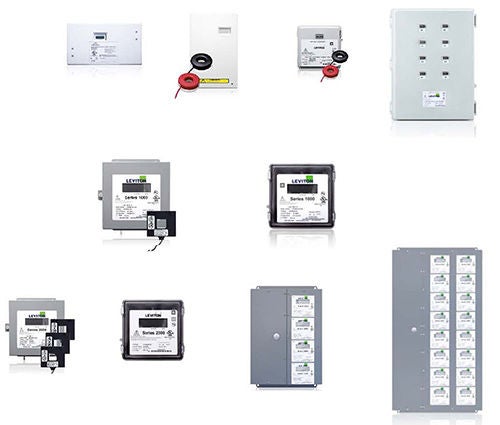
- Mini Meter
- Single and Dual-phase models (100A & 200A)
- Various enclosure options
- Multi-Meter Unit (MMU)
- Series 1000
- Single-phase (100A –800A)
- Indoor and Outdoor enclosure options
- Series 2000
- 3-phase (100A –1200A)
- Indoor and Outdoor enclosure
- Multi-Meter Unit (MMU)
Leviton Pulse Meters (Gas & Water)
Gas Meters
- 200–400 Cubic Ft./Hr. Models to suit most applications
- Standard pulse output –CFH
- Compatible with Leviton EMH and wireless AMR
- Connector sets included with the meter

Water Meters
- Hot & cold water meters for residential and commercial applications
- A variety of models from ¾” to 2.0”
- Standard pulse output –Gal.
- Compatible with Leviton EMH and wireless AMR
- Couplings included with the commercial meters
Advanced Meters
- Advanced meters offer a broad range of metering parameters beyond kWh
- Highly configurable for a variety of applications
- Support for networked user interface
- Modbus RTU (RS485) / TCP (Ethernet)
- BACnet MSTP (RS485 / IP (Ethernet)
- Most utilize a software or browser-based user interface for configuration
- Used widely for commercial & industrial applications
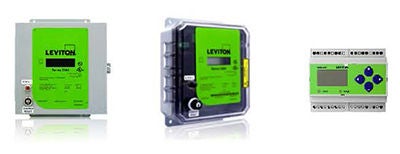
- Advanced Meter Data
- Advanced meters monitor and report all of their data points
- Enable analytics on a variety of energy usage and quality parameters.
- kW / net energy
- kVA / kVAR
- Power Factor
- Voltage / Freq
- Ideal when more energy data required
Pros
- Complete data set beyond kWh
- Reliable
- Highly configurable
- Leviton commissioning services highly recommended.
- Lots of available models to support single-phase, 2-phase and 3-phase applications
- Support for Modbus & BACnet interface
- Easily networked
Cons
- More complex to install and configure
- Somewhat more expensive
Advanced Meters
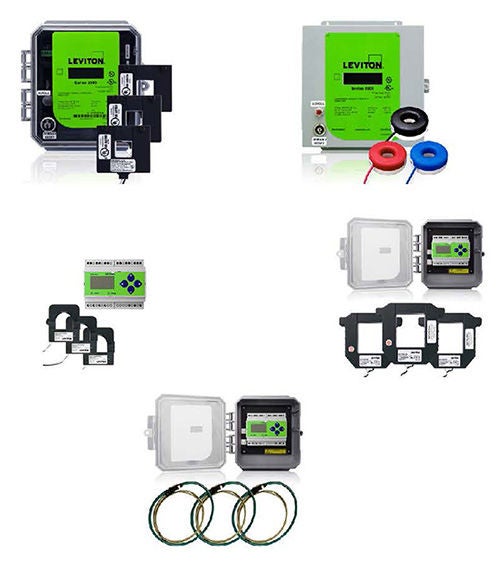
- Series 3500
- 3-phase meters (100A –5000A)
- Modbus TCP or BACnet IP (Ethernet)
- Indoor or outdoor enclosure options
- Series 4000
- 3-phase meters (100A –5000A)
- Solid Core, Split Core & Rogowski CT options
- Modbus RTU (RS485)
- Outdoor enclosure or DIN rail mount options
- Series 4100
- 3-phase meters (100A –5000A)
- Bi-directional version of the Series 4000
- Modbus RTU or BACnet MS/TP (RS485)
- Outdoor enclosure or DIN rail mount options
Advanced Multi-Circuit Meters
- Advanced meters offer a broad range of metering parameters beyond kWh
- Highly configurable for a variety of applications
- Support for networked user interface
- Modbus RTU (RS485) / TCP (Ethernet)
- BACnet MSTP (RS485) / IP (Ethernet)
- Most utilize a software or browser-based user interface for configuration
- Used widely for commercial & industrial applications
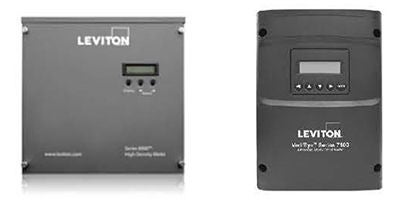
- Advanced Meter Data
- Advanced meters monitor and report all of their data points
- Enable analytics on a variety of energy usage and quality parameters.
- kW / net energy
- kVA / kVAR
- Power Factor
- Voltage / Freq
- Ideal for metering multiple loads from a common source
- Ideal when more energy data required
Pros
- Monitor multiple circuits from a single meter platform (12 to 48 circuits)
- Cost per meter point is lower
- Complete data set beyond kWh
- Saves space
- Easily networked
- Reliable
- Highly configurable
- Leviton commissioning services highly recommended.
- Models to support single-phase, 2-phase and 3-phase applications
- Support for Modbus & BACnet interface
Cons
- More complex to install and configure
Leviton Advanced Multi-Circuit Meters
- Series 8000
- 1, 2 or 3-phase configurations (100A –5000A)
- 24 Circuits (configurable for 24 x 1P, 12 x 2P, 8 x 3P)
- Solid Core & Split Core CT options
- Modbus RTU (RS485), Modbus TCP or IP (Ethernet)
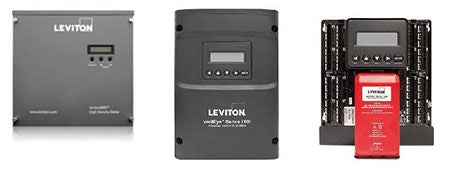
- Series 7100
- 16 x 3-phase meters (50A –4000A)
- Solid Core, Split Core & Rogowski CT options
- Modbus RTU or BACnet MS/TP (RS485), Modbus TCP or BACnet IP (Ethernet)
- Series 7000
- Embedded version without the enclosure
- 16 x 3-phase meters (50A –4000A)
- Solid Core, Split Core & Rogowski CT options
- Modbus RTU or BACnet MS/TP (RS485), Modbus TCP or BACnet IP (Ethernet)
High Density Pulse Module (A8911)
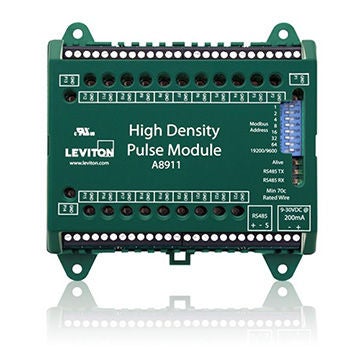
- Gathers pulse data from up to 23 pulse meters
- Consolidates the data to a single Modbus data stream
- Requires a 24VDC power supply
Where to use it:
- Works with all the pulse meters (electric, water, gas)
- Key component in multiple meter installations, acting as a pulse data hub
- Frequently integrated in MMU cabinets to connect all the meters to a single Modbus output.
Flex I/O Module (A8332)
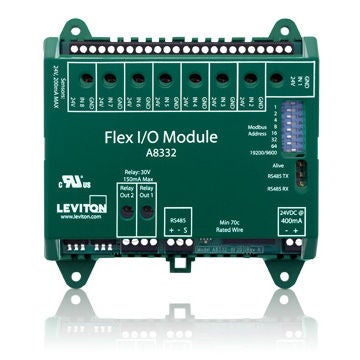
- Gathers pulse data from up to 8 user defined device inputs
- Pulse inputs
- 4-20mA device inputs
- Resistive
- Consolidates the data to a single Modbus data stream
- Requires a 24VDC power supply
Where to use it:
- Ideal when there are inputs other than pulse meters that need to be captured
- Also works with all the pulse meters (electric, water, gas)
Modhopper (R9120)
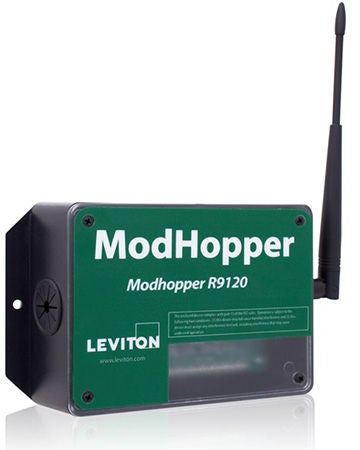
- Acts as a wireless Modbus transceiver
- Creates 900MHz Wireless Mesh Network
- Includes RS485 input for up to 32 devices
- Includes 2 pulse inputs
- Requires a 24VDC power supply
Where to use it:
- Use where running Modbus (RS485) cable is problematic.
- Ideal in campus locations to reach between buildings.
- Works with all the pulse meters (electric, water, gas)
- It is a wireless device: Be aware of wireless obstructions and clear line of sight issues with device placement
Wireless Automated Meter Reading (AMR)

- 902 Mhz Wireless Mesh Network
- Pulse meter data only
- System components
- Meter Data Transceiver (MDT) T70MB
- One MDT attached to each meter
- Repeaters T95RX
- As needed to build a strong mesh network
- Data Concentration Access Point (DCAP) T25DX
- One per site -captures all the meter pulse data and pushes it out as CSV file
Where to use it:
- For use with pulse meters. (Mini Meter, Series 1000/2000)
- MDT comes integrated with Mini Meter (MDTSW / MDTFW)
- Ideal for multi-tenant residential applications
EMB Hub-Lite A7810
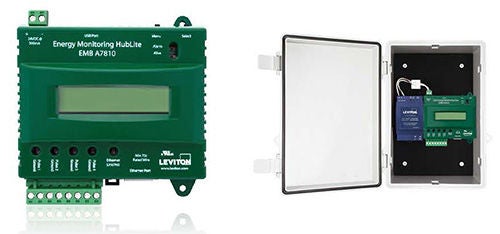
- Consolidates pulse metering data from up to 4 meters.
- Includes 4 standard pulse inputs (no Modbus on this model)
- Creates a CSV file with the combined data
- Forwards the data to user specified location:
- BMO cloud software platform
- 3rd party software platform
- FTP site
- File download to PC
- Integrated, user friendly browser interface
Where to use it:
- Ideal for small pulse meter systems (4 meters or less)
- Use with Med (4 meter) MMU
- Available separately, or in NEMA enclosure with power supply
EMB Hub A8810
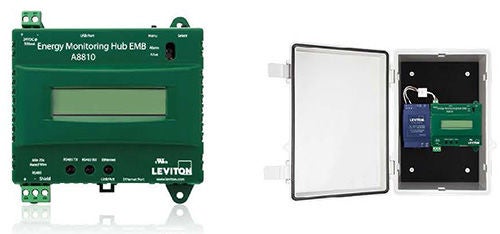
- Consolidates metering & sensor data from up to 32 Modbus RTU devices (RS485)
- Compatible with a wide variety of meters and Modbus sensors
- Integrated drivers for most devices
- Easy setup
- Creates a CSV file with the combined data
- Forwards the data to user specified location:
- BMO cloud software platform
- 3rd party software platform
- FTP site
- File download to PC
- Integrated, user friendly browser interface
Where to use it:
- Ideal for large integrated meter systems (pulse or Modbus)
- Use with HD Pulse Module (A8911) for pulse meter integration
- Available separately, or in NEMA enclosure with power supply
EMH Hub A8812
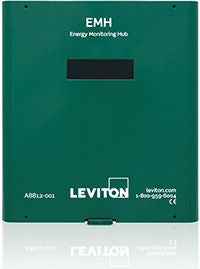
- Consolidates metering & sensor data from up to 32 Modbus RTU devices (RS485) + 8 pulse inputs
- Interface to Modbus RTU (RS485)
- Compatible with a wide variety of meters and Modbus sensors
- Integrated drivers for most devices
- Easy setup
- Creates a CSV file with the combined data
- Forwards the data to user specified location:
- BMO cloud software platform
- 3rd party software platform
- FTP site
- File download to PC
- Integrated, user friendly browser interface
Where to use it:
- Ideal for large integrated meter systems (pulse or Modbus)
- Ideal for installations with a mix of pulse & Modbus devices
- Where a wall mounted metal enclosure with a locking option is desirable.
High-Rise Residential
(Multiple Dwelling Units)
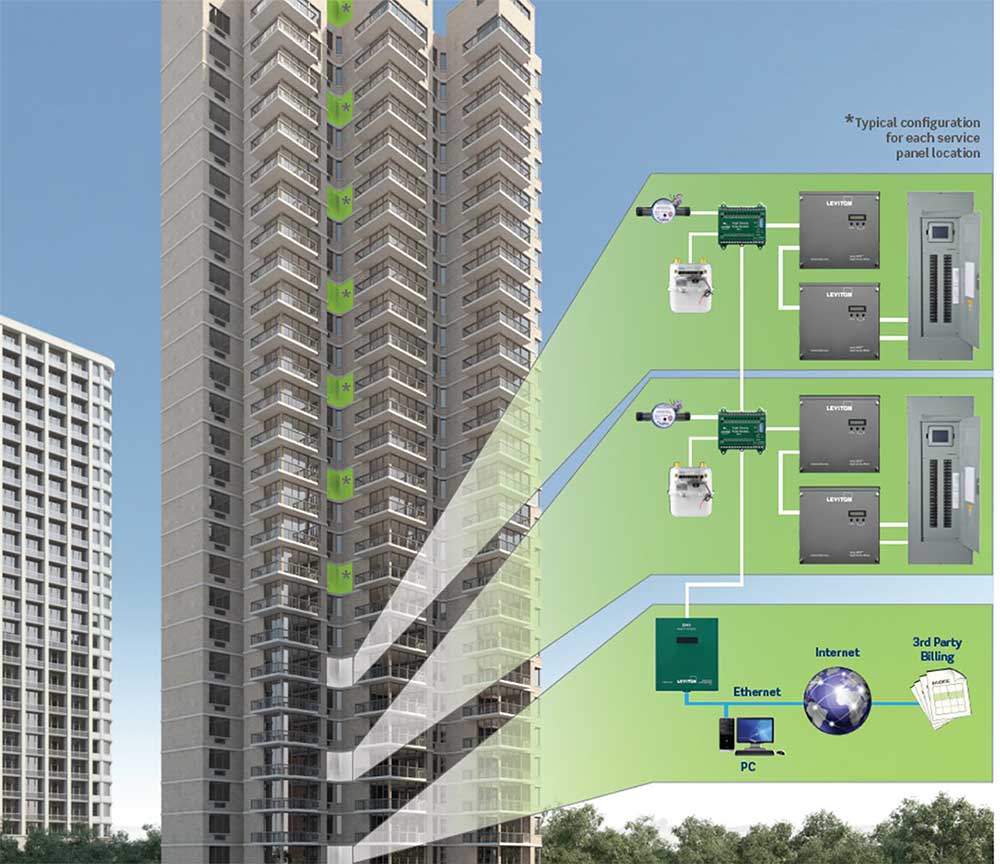
Leviton is your single source for a complete tenant metering solution specifically suited to high-density applications.
- A solution built around the Series 8000 is especially cost-effective for new construction due to its capacity and flexibility.
- The Series 8000 submeter is easy to install and wire and allows complete flexibility to fit any project design and is configurable for any type of electrical service including:
- 120/208V 1P3W (120/208V 3P4W service at the panel)
- 120/240V 1P3W
- 120/208V 3P4W
The Leviton Advantage
- Minimal wall space and reduced construction costs
- Interface for water, gas, BTU, etc. meters into a single system
- Leviton factory technicians provide system startup, programming and training services
- Open architecture provides flexibility to use your choice of third-party billing company or VerifEye BMO Tenant Billing Module
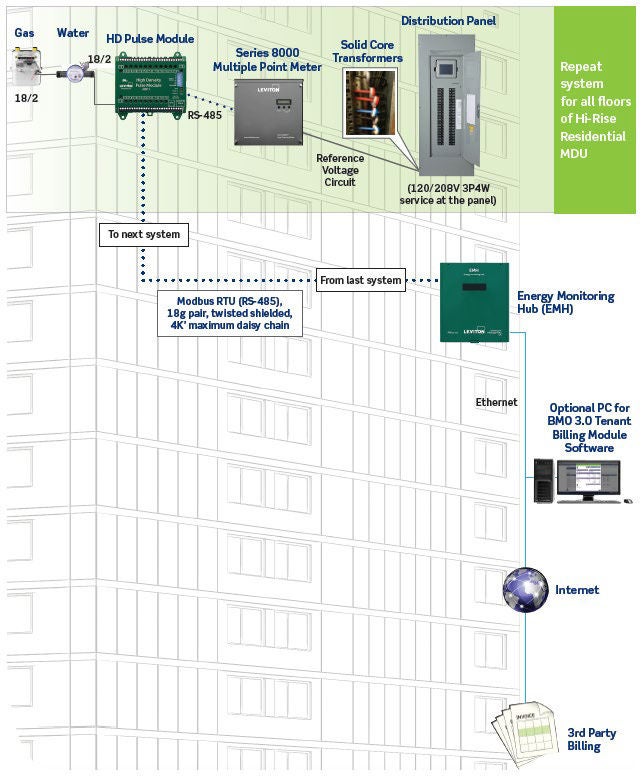
- Use A8911 HD Pulse Module for pulse gas & water meter capture
- Use Series 8000 meter at the panel to meter the main circuit for each individual apartment/unit.
- Use the A8812 or A8810 Hub to consolidate the data from all the meters
- Push the data to BMO Tenant Billing Module or a 3rdparty billing software solution
Wireless AMR Residential
(Multiple Dwelling Units)
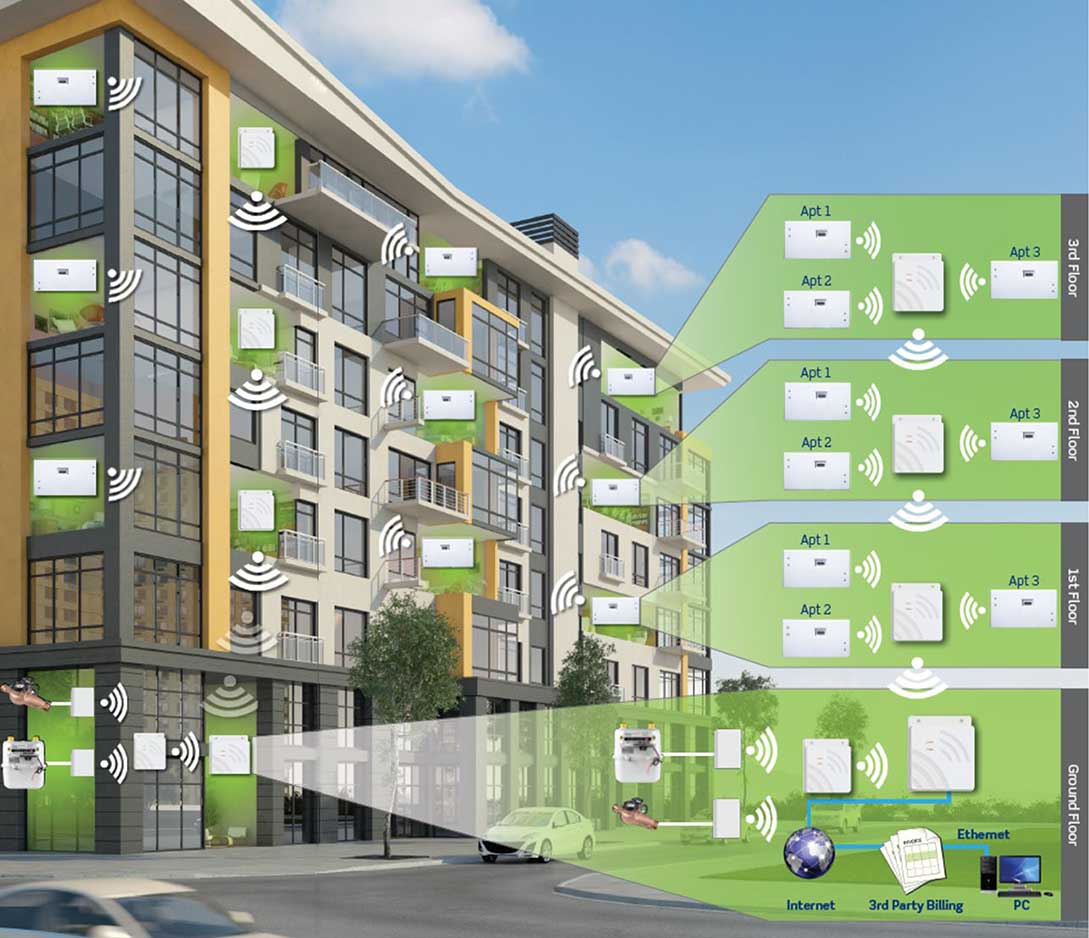
Leviton offers a complete wireless tenant metering solution which is ideally suited to multi-tenant applications.
- A solution built around the Mini Meter is especially cost-effective for new construction, using wireless transmitters instead of hard-wired meters.
- The flush mount or surface mount Mini Meter is easy to install in each unit.
- Supports 120/208/240V service up to 200A
The Leviton Advantage
- Easy to retrofit with robust wireless system
- Small footprint with flush mount or surface mount enclosures
- Wireless support for easy integration of water & gas, meters into a single system
- Leviton factory technicians provide system startup, programming and training services
- Open architecture provides flexibility to use your choice of third-party billing company or VerifEye BMO Tenant Billing Module
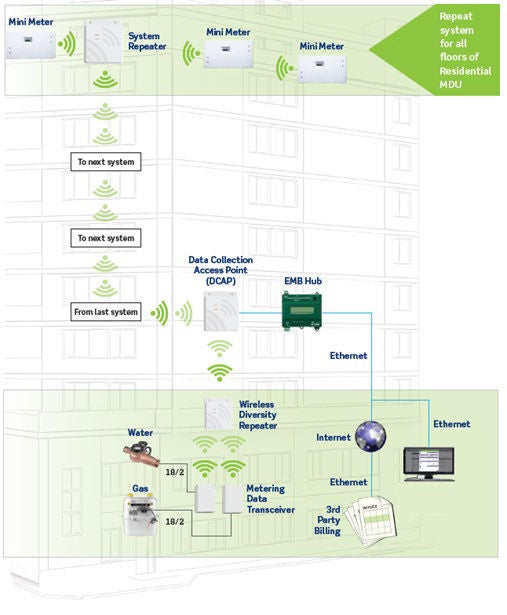
- Use Mini Meter with Wireless AMR installed in each individual apartment/unit.
- Use standard Wireless MDT for pulse gas & water meter capture
- Use Wireless Repeaters, as needed to build a solid mesh network
- Use the Wireless DCAP to consolidate all the wireless data from each unit
- (Optional) Use the A8810 Hub to push the data from the DCAP
- Push the data to 3rd party billing software or download the CSV file direct from the hub
Commercial/Mixed Use
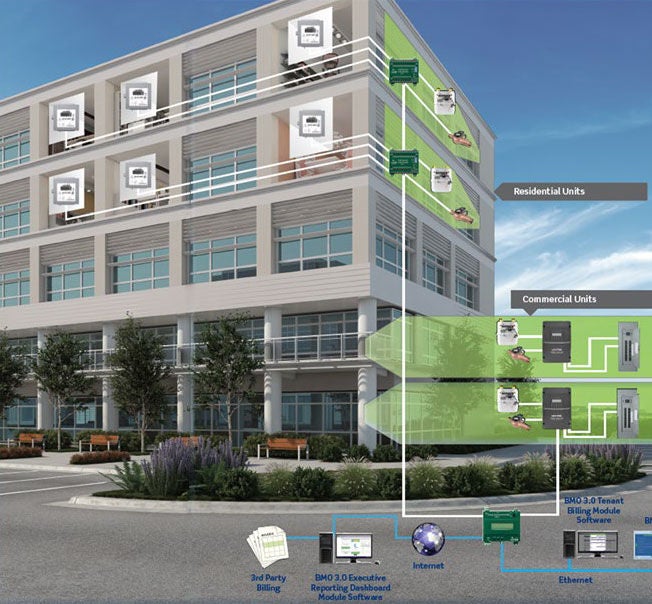
Whether for a small, two-story office building, a sprawling commercial office complex or a new mixed-use facility, Leviton has the right combination of components and expertise to deliver the optimal solution.
- Redirect accountability for energy usage to tenants and streamline accounting operations with a Leviton solution.
- Precise monitoring of tenant utilities and major building systems can generate substantial cost savings.
The Leviton Advantage
- Easy to install, saving time and labor costs
- Complete, cost effective system solution
- Universal energy information with open protocol and interface
- Web/Browser based access to data and reporting with BMO software solutions
- Compatibility with 3rd party billing software solutions
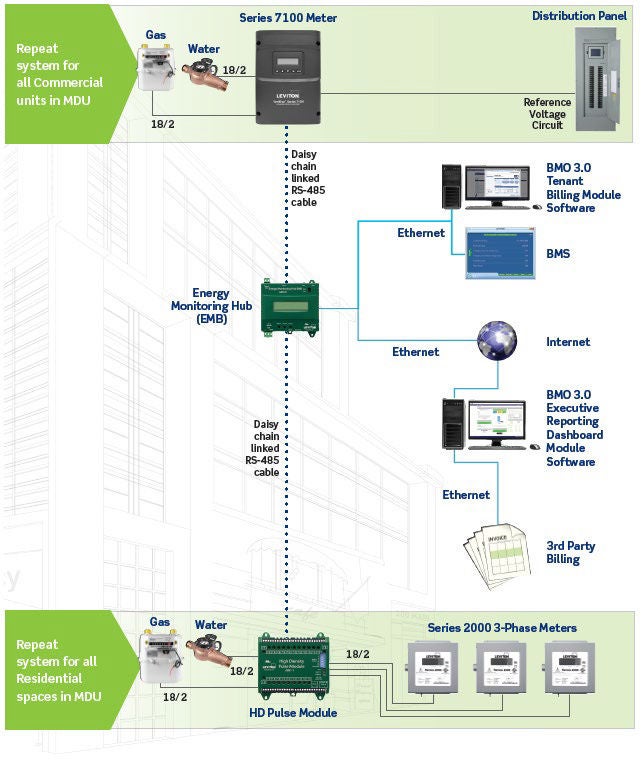
- Use Series 7100 meters at the panel for high density panel metering
- Highly configurable for a variety of load types
- Use Series 2000 pulse meters for isolated 3-phase loads.
- Use HD Pulse modules (A8911) to capture data from S2000, gas and water meters.
- Use the A8810 Hub to consolidate the data from the meters and HD Pulse modules
- Push the data to BMO, 3rd party billing software, or download the CSV file direct from the hub
- Use BACnet interface with A8810 hub to share data with BMS system
Commercial/Mixed Use
(with Wireless)
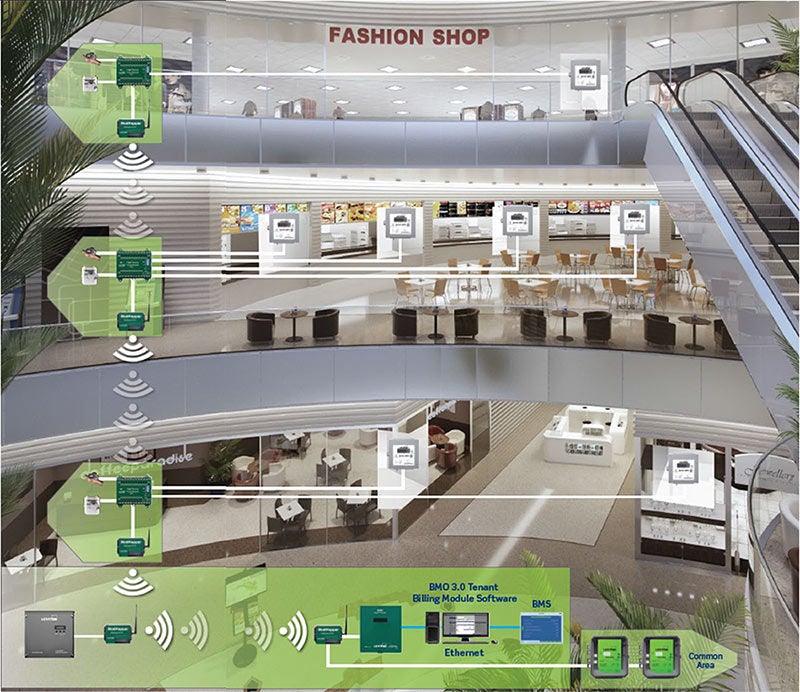
Leviton VerifEye features a range of devices that incorporate standard protocols, wireless options and split core CT technologies, making retrofits relatively easy and inexpensive.
Accurate tenant billing of electric, water, gas and common area utility usage
- Redirect accountability for energy usage to tenants and streamline accounting operations
- Precise monitoring of tenant utilities and major building systems can generate substantial cost savings.
The Leviton Advantage
- Easy to install, saving time and labor costs
- Complete, cost effective system solution
- Modhopper wireless makes retrofits easy.
- Web/Browser based access to data and reporting with BMO software solutions
- Compatibility with 3rd party billing software solutions
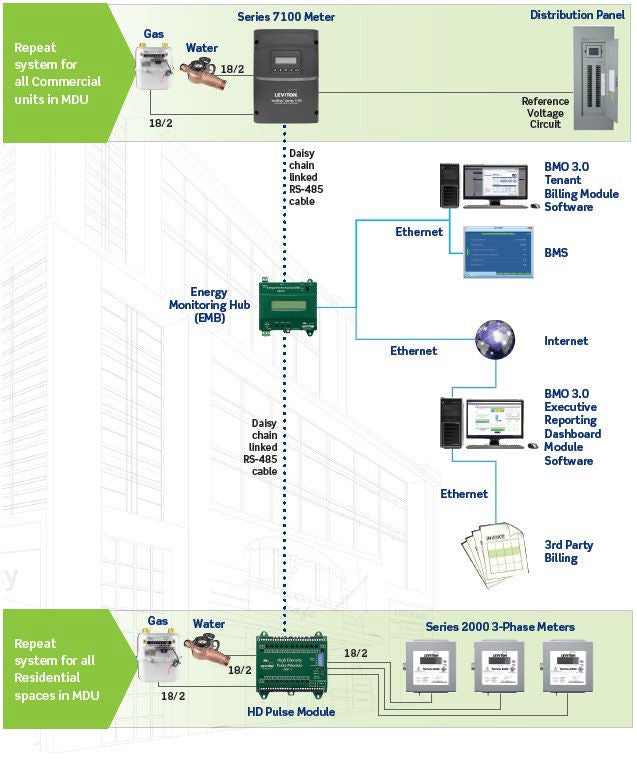
- Use Series 7100 or 8000 meters at the panel for high density panel metering
- Highly configurable for a variety of load types
- Use Series 2000 pulse meters for isolated 3-phase loads.
- Use HD Pulse modules (A8911) to capture data from S2000, gas and water meters.
- Use Modhopper (R9120) Wireless for retrofit where running RS485 wiring is problematic
- Use the A8810 Hub to consolidate the data from the meters and HD Pulse modules
- Push the data to BMO, 3rd party billing software, or download the CSV file direct from the hub
- Use BACnet interface with A8810 hub to share data with BMS system
Educational & Professional Campus
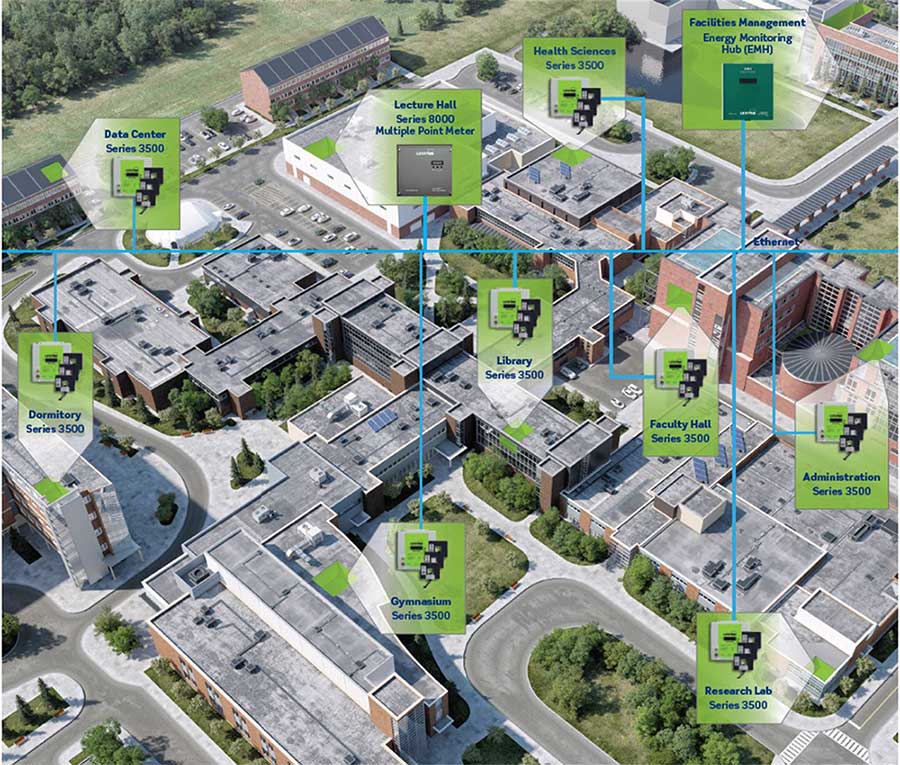
Modern facilities are increasingly reliant on technology. Computers at every desk, sophisticated A/V equipment in every room, all consuming energy.
VerifEye systems allow energy submetering from the whole building down to individual branch circuits on a single, campus-wide platform. Energy data is shared with energy monitoring software, EMS/BMS, dashboards, ESCOs, etc.
The Leviton Advantage
- Easy to install, saving time and labor costs
- Broad line of products, cost effective system solution
- Highly scalable
- Clear visibility into downstream energy data facilitates departmental cost allocation and aids in forecasting future energy needs
- Open system, compatible with BMO, 3rd party software, & EMS/BMS
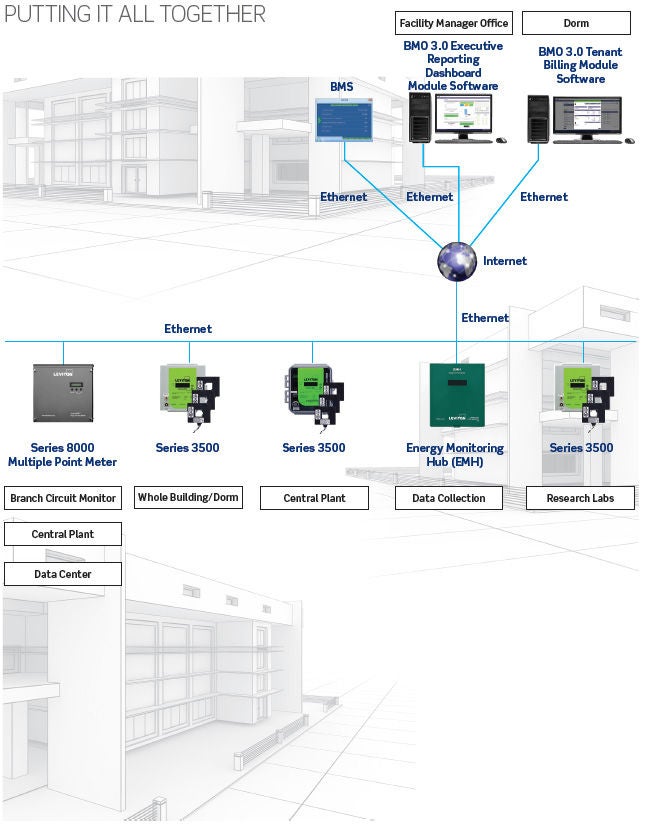
- Use Series 8000 meters at the panel for high density panel metering
- Highly configurable for a variety of load types
- Use Series 3500 meters for isolated 3-phase loads.
- Utilize existing CAT5/6 (Ethernet) backbone for system communication
- Use the A8812 Hub to consolidate the data from the meters
- Push the data to BMO, 3rd party reporting and billing software, or download the CSV file direct from the hub
- Use BACnet interface with A8810 hub to share data with BMS system
Industrial/Manufacturing
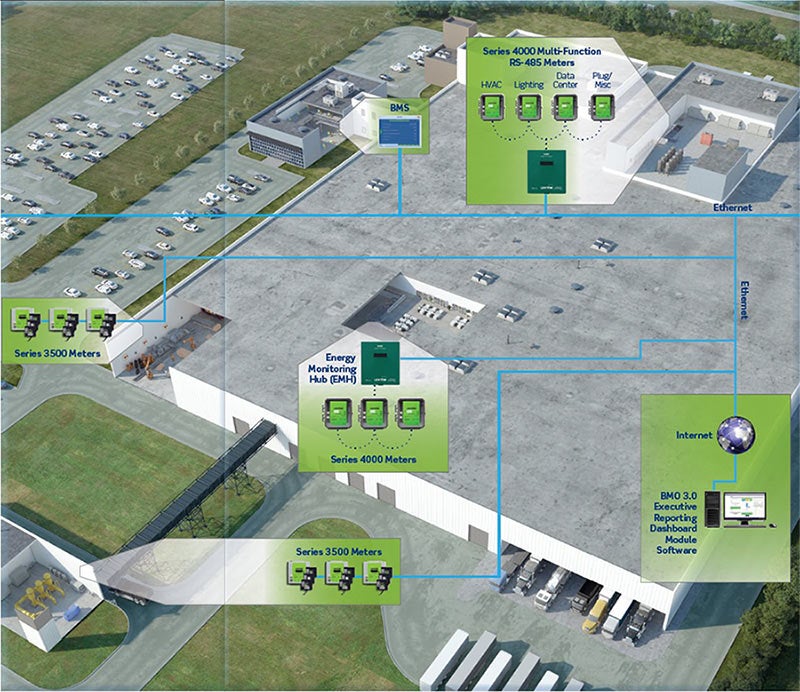
It takes a tremendous amount of energy to run manufacturing process equipment, lighting and HVAC systems within a typical plant. Factories and industrial facilities can achieve significant cost savings by improving equipment performance, by load shifting, and by eliminating wasteful consumption.
In addition, accurate allocation of utility costs made possible through energy monitoring can enhance management of per-unit production costs. Energy monitoring data can facilitate a robust energy management and improvement plan that if utilized properly, will provide significant savings opportunities.
The Leviton Advantage
- Highly scalable
- Easy to install, saving time and labor costs
- Broad line of products, cost effective system solution
- Clear visibility into downstream energy data facilitates departmental cost allocation and aids in forecasting future energy needs
- Open system, compatible with BMO, 3rd party software, & EMS/BMS
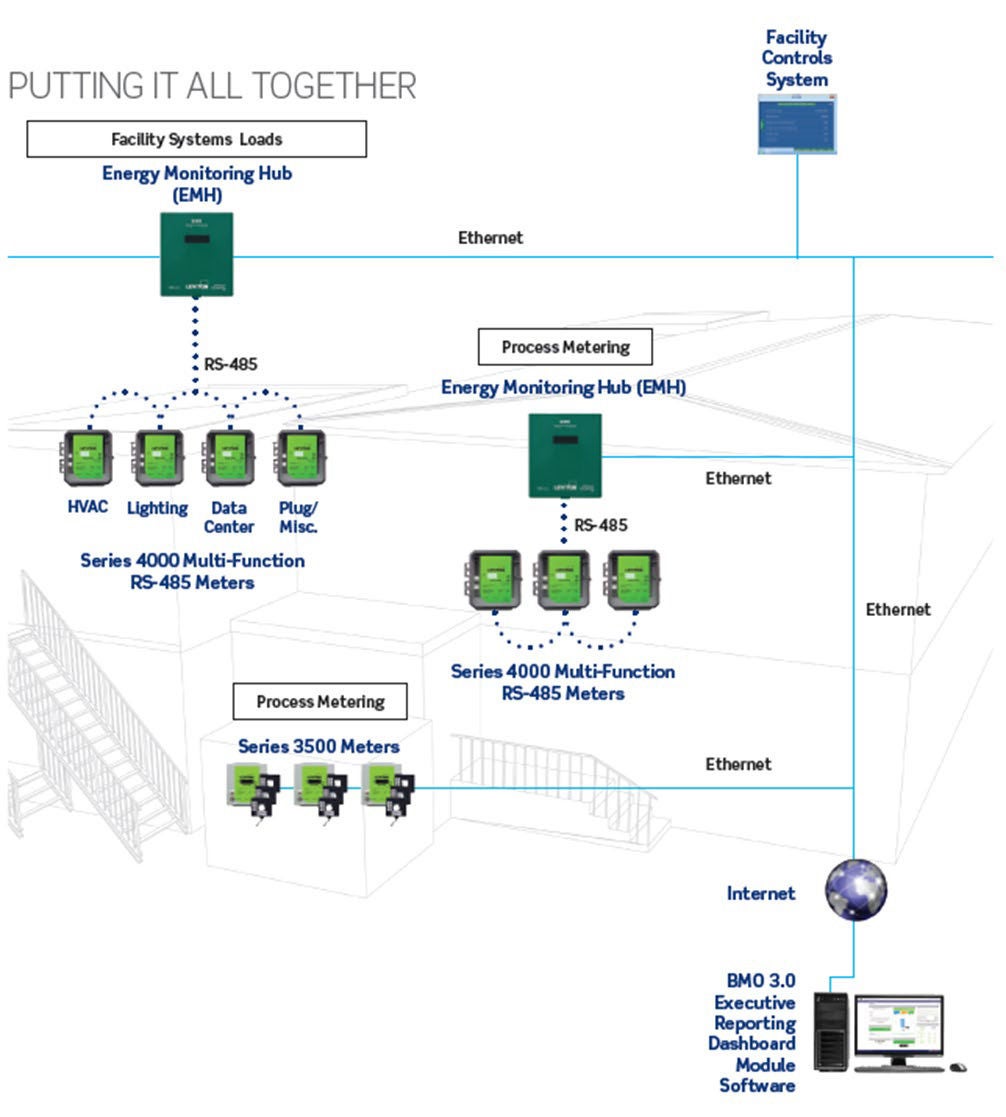
- Use Series 4000 Modbus (RS485) meters for industrial loads
- Highly configurable for a variety of load types
- Use Series 3500 Modbus TCP (Ethernet) meters for isolated 3-phase loads.
- Utilize existing CAT5/6 (Ethernet) backbone for system communication
- Use the A8812 Hub to consolidate the data from the meters
- Push the data to BMO, 3rd party billing software, or download the CSV file direct from the hub
- Use BACnet interface with A8810 hub to share data with BMS system


